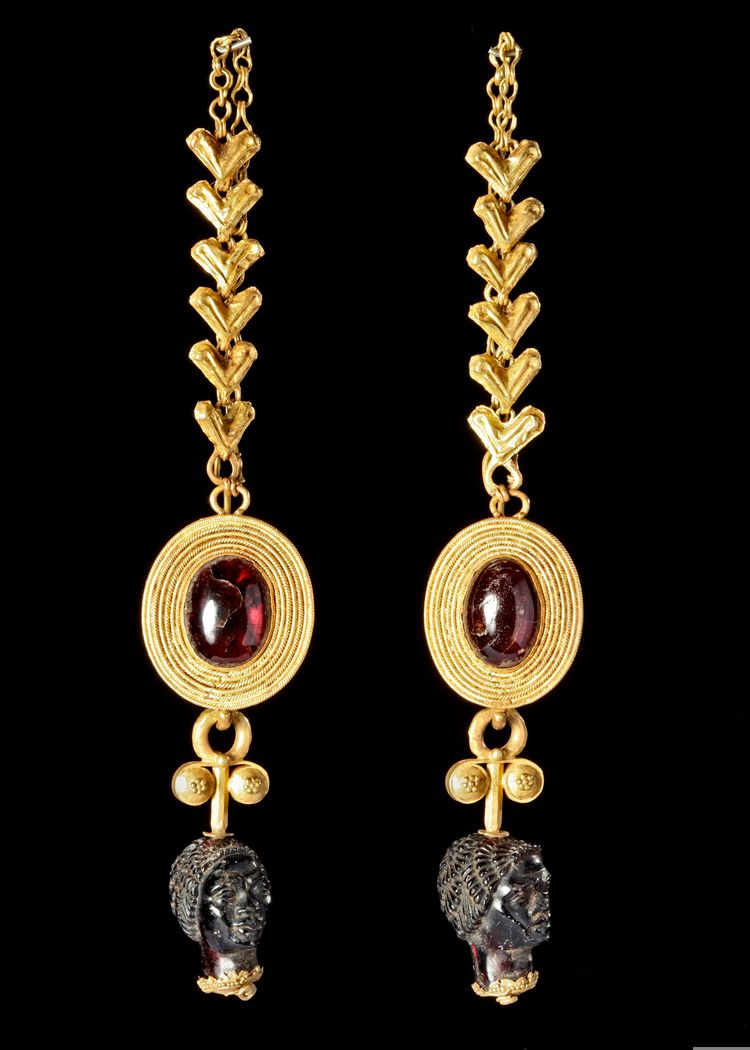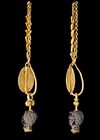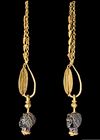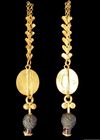Lot 61 A LARGE PAIR OF GRECO-ROMAN GOLD EARRINGS WITH GARNET AFRICAN HEADS, 2ND CENTURY BC-1ST CENTURY AD
This exceptional pair of African head pendant earrings originate from Greece, from the third to second century BC. Images of Ethiopians and Nubians were popular in Egyptian art but were relatively rare in the Mediterranean world until the conquest of Egypt by Alexander the Great in the late fourth century BC suddenly exposed the Greeks to the peoples of the African continent. As part of this new and intriguing Nilotic landscape, images of Africans evoked the distant and exotic cultures at the edge of the known world. The popularity of Nilotic themes coupled with a Greek tradition in jewelry of elaborate figural pendants (for example, beads, acorns, vessels, and female heads) led to the depiction of Nubians and Ethiopians as part of the popular repertory of wearable art. Initially, heads were fashioned wholly in gold, but by the late third and early second century, semi-precious stones were incorporated into the composition, as here. Materials rich and warm in color, such as carnelian, sardonyx, amber, and garnet, were all transformed into African figures, not only rendering each piece more elaborate, but also imbuing them with a striking liveliness and depth of character.
The use of gemstones set into gold jewelry remained a popular practice in the early Roman period; precious stones were said to have held magical properties and were considered markers of high social status. Pendants and earrings in the form of African heads seem to have been particularly popular in Italy, with examples known from Bari and Ruvo.
This pair not only have the heads of the Africans rendered in garnet but also have large oval garnet cabochon's at the centre of the oval wire decorated main element which attached to the ear. Also at the top of the oval element a chain is attached with a section rendered in 'v' shaped links. The chain would have assumedly hung around the ear.
In terms of scale and the style of execution these are among the finest examples known. Gold and garnet. Greco-Roman.
118 mm. long with the chain extended.
Weight: 31,06 grams
PROVENANCE
Private collection, Belgium since 2000s




